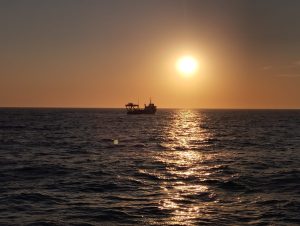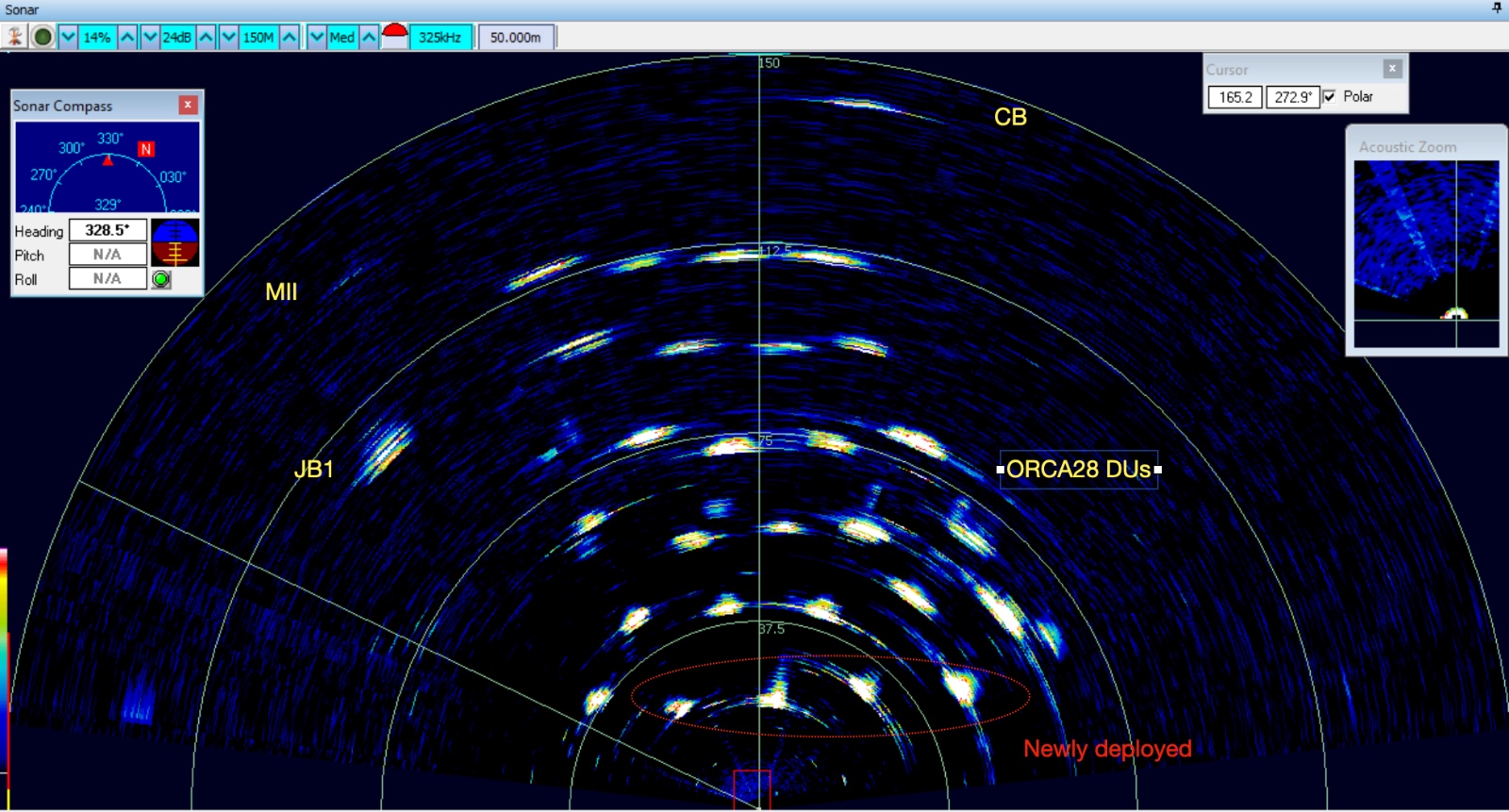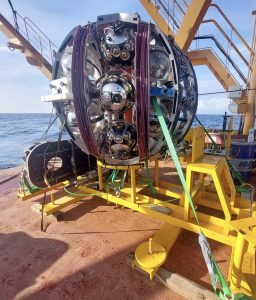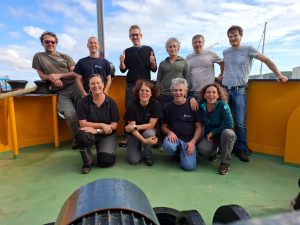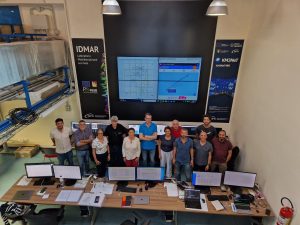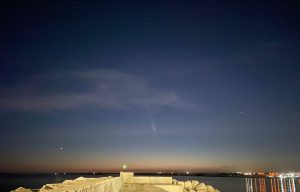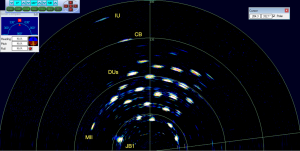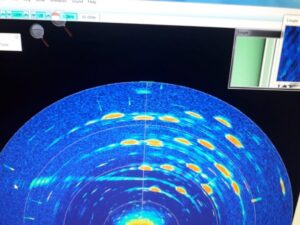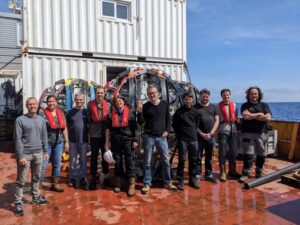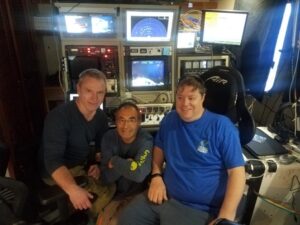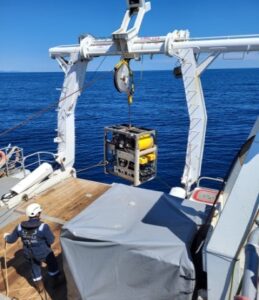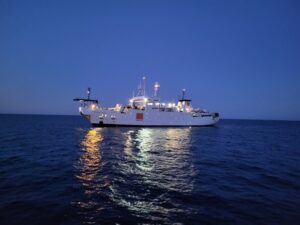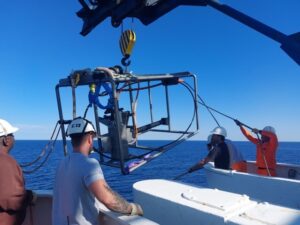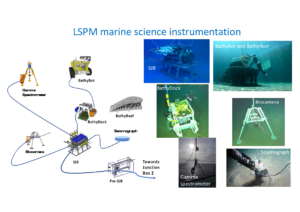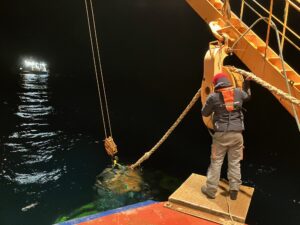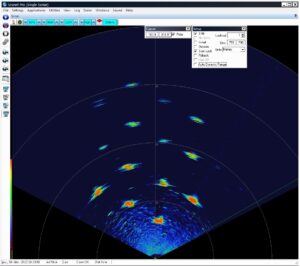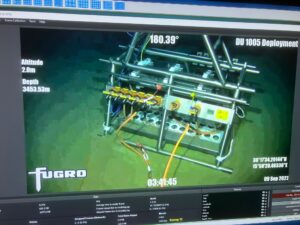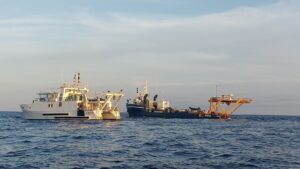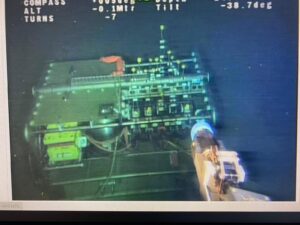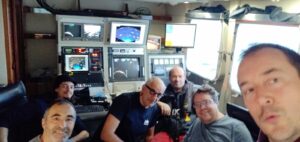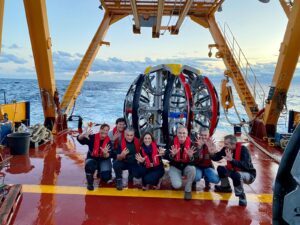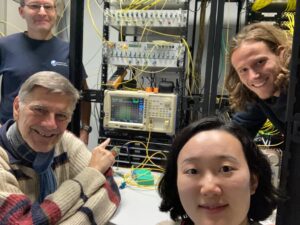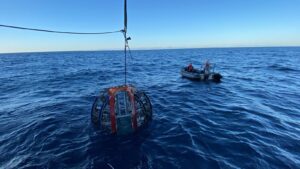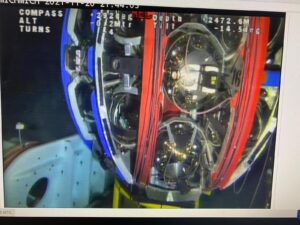4 new detection units installed in ORCA
16 May 2025 – This week at the ORCA site, a sea operation was performed with a twofold purpose: the recovery from the sea bottom of some oceanographic instruments which required some maintenance and the installation of a set of 4 new detection units. The number of detection units in ORCA has thus been increased to 28.
The field is getting crowded!
This is a sonar map of the ORCA site after the installation of the new detection units. Also marked in the image are the various components of the submarine infrastructure, comprising a junction box (“JB1”), a module for interface with oceanographic instrumentation (Module Interface Instrumented – MII) and a calibration structure (Calibration Base – CB).
As usual, the operation was performed with two ships: the Castor of Foselev, for deployment of the detection units, and the Janus II of SAAS (formerly Comex), equipped with the Apache deep-sea remotely operated vehicle, for submarine operations.
Everything worked very smoothly – many thanks to the crews offshore as well as to the team who performed the functional tests of the new detection units from the shore station!
